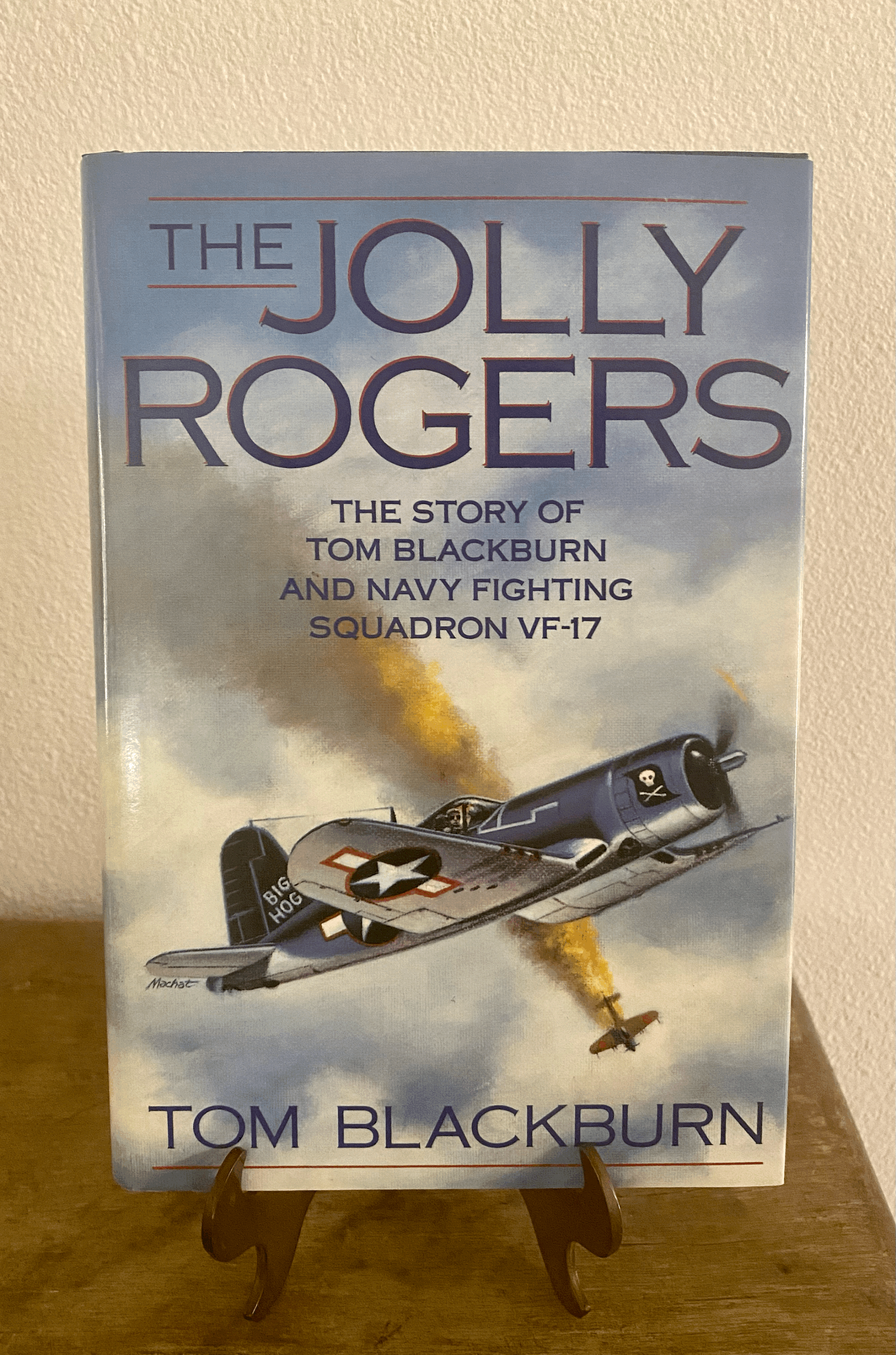The Jolly Rogers
The Jolly Rogers
This is the true story of one of the Navy's foremost fighter squadrons, VF-17, and its charismatic commander fighter ace Tom Blackburn. Most of us have heard of Greg "Pappy" Boyington and his Black Sheep fighter pilots. However it is not well known that Navy Fighting Squadron VF-17----called the jolly Rogers and sporting the skull and crossbones on their engine cowlings-- exceeded the combat record of Boyington's men, shooting down 154 enemy planes in the seventy-six days they were in combat in the South Pacific. Their job was to protect American aircraft carriers and bombers in the crucial struggle for the Solomons . Thirteen of Blackburn's men, including himself, became aces each destroying more than five enemy aircraft each.
John Thomas Blackburn was born in Annapolis, Maryland, and raised in Washington D.C., and graduated from Western High School. Blackburn graduated from the United States Naval Academy in 1933, became a Naval Aviator, and was a flight instructor in 1941 when the United States entered World War II. In July 1942 assigned to organize VGF-29 as commanding officer and report aboard the new escort carrier USS Santee. The squadron embarked aboard USS Santee in October 1942 to participate in Operation Torch, the Allied invasion of North Africa. Arriving in the waters off Morocco on November 6, VGF-29 flew first combat mission on 8 November but could not find their target, and poor weather and damaged homing equipment aboard Santee forced them to ditch or force-land their Wildcats. Blackburn floated adrift in a liferaft for 3 days before he was spotted by a destroyer and rescued. Thus ended VGF-29's inauspicious debut and Blackburn's first combat deployment. Shortly thereafter, Blackburn was ordered to stand up a new squadron. Blackburn stood up VF-17 on January 1. 1943 at NAS Norfolk. The Jolly Rogers deployed to the Pacific, but upon arrival there the Navy decided to initially land base its Corsairs. The squadron flew to Guadalcanal on October 26 where it received orders to begin operating out of Ondongo (which means "Place of Death") on the island of New Georgia in the Solomon Islands. They arrived on the 27th,and proviided air cover i for the Landings at Cape Torokina, near Empress Augusta Bay on Bougainville Island . On November 8, 1943, The Jolly Rogers faced their biggest test to date when six Jolly Rogers faced an attack of 15 Japanese D3A "Val" dive bombers escorted by 24 A6M "Zeros". Hedrick launched with a flight of eight Corsairs, but lost two when they aborted. In the engagement, VF-17 downed three fighters and damaged four others with no losses. In its two tours of duty in the Solomon Islands, VF-17 had 152 aerial victories and produced 11 aces. Blackburn ranked third with 11 victories behind Hedrick with 12 and IIra Kepford who led the squadron with 17. VF-17 finished its last combat tour in the Solomons on May 10, 1944.Cdr Blackburn led VF-17 (January 1943 – May 1944) to become the greatest fighter squadron with confirmed 154 enemy kills (an 8:1 loss ratio) plus 75 probable kills. They sank five transport ships and barges. No plane they escorted was ever shot down, not even in flights against Rabaul. In 76 days of combat they flew 8577 combat hours and produced 13 flying aces. Forty years later, his pilots publicly credited the squadron's skipper for its success; he taught them much and was successful in getting equipment and supplies. After World War II he worked at the PentagonHe retired from the Navy in 1962. In mid-1962 Blackburn began growing wine grapes and raising "blue ribbon" Golden Retrievers in St. Helena, California. Cdr Blackburn died on March 21, 1994.
This hard covered book was published in 1989 and purchased in 1990 in New never read condition with signature as shown of Captain Tom Blackburn.

